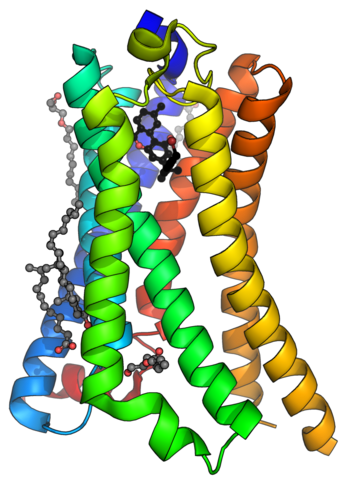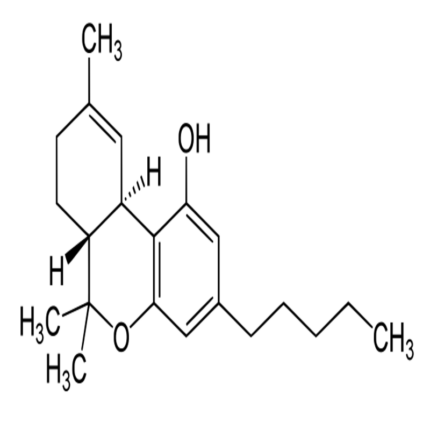
The endocannabinoid system: The human cannabinoid system
The endocannabinoid system (ECS) is an essential part of the human body that plays an important role in regulating numerous physiological processes. It was discovered in the 1990s when scientists were studying the effects of cannabinoids – the active compounds in cannabis – in the human body. This system is present in both humans and other mammals.
The main components of the endocannabinoid system
The ECS consists of three main components:
- Endocannabinoids
- Endocannabinoids are endogenous molecules that have similar properties to cannabinoids from the cannabis plant. Two of the best-known endocannabinoids are
- Anandamide (AEA): Also known as the “molecule of happiness”, it plays a role in regulating mood and well-being.
- 2-arachidonoylglycerol (2-AG): This endocannabinoid is involved in controlling the immune system and the perception of pain.
- Endocannabinoids are produced by the body when needed and have a short-term effect.
- Endocannabinoids are endogenous molecules that have similar properties to cannabinoids from the cannabis plant. Two of the best-known endocannabinoids are
- Receptors
The ECS comprises two main types of receptors found in different tissues of the body:- CB1 receptors:
- These receptors are mainly found in the central nervous system (brain and spinal cord).
- They influence memory, movement coordination, pain perception and appetite.
- CB2 receptors:
- These receptors are mainly found in immune cells and are responsible for the regulation of inflammatory processes and immune responses.
- Endocannabinoids and plant cannabinoids (e.g. THC and CBD) bind to these receptors and trigger different effects.
- CB1 receptors:
- Enzymes
- Enzymes are responsible for breaking down the endocannabinoids after their effect. The most important enzymes are
- FAAH (Fatty Acid Amide Hydrolase): Breaks down anandamide.
- MAGL (monoacylglycerol lipase): Decomposes 2-AG.
- Enzymes are responsible for breaking down the endocannabinoids after their effect. The most important enzymes are
Functions of the endocannabinoid system
The ECS is involved in many vital processes, including:
- Pain control: It modulates the perception of pain and can help to alleviate chronic pain.
- Mood regulation: The ECS influences emotions and helps to reduce stress and anxiety.
- Appetite and metabolism: It plays a role in controlling hunger and energy consumption.
- Immune system: The ECS helps to regulate inflammation and keep the immune system in balance.
- Sleep-wake rhythm: It contributes to the regulation of sleep patterns.
- Neuroprotection: The ECS protects the nervous system and supports the regeneration of nerve cells.
Cannabis contains a variety of cannabinoids that have different effects on the body and mind. Here are some of the most common cannabinoids and their effects:
1. Tetrahydrocannabinol (THC)
- Effect: THC is the main psychoactive cannabinoid in cannabis. It causes the “high” associated with cannabis consumption. THC binds to CB1 receptors in the brain and nervous system, leading to a variety of effects including euphoria, increased creativity, changes in perception and time perception, and increased relaxation.
- Medical application: THC is also used therapeutically, e.g., for relief of pain, loss of appetite (especially in cancer patients or people with HIV/AIDS), nausea (e.g., during chemotherapy), and sleep disorders.
2. Cannabidiol (CBD)
- Effect: CBD is not psychoactive and does not cause a “high”. It is often described as calming and anxiolytic and has anti-inflammatory and pain-relieving properties. CBD interacts with various receptors in the body, particularly the endocannabinoid system, but also with serotonin and vanilloid receptors, giving it a wide range of therapeutic applications.
- Medical application: CBD is commonly used to treat anxiety disorders, chronic pain, epilepsy (especially in children), and sleep disorders. It also has neuroprotective properties and is being researched for the treatment of neurological diseases such as Parkinson’s and Alzheimer’s.
3. Cannabinol (CBN)
- Effect: CBN is a breakdown product of THC that forms when THC ages or oxidizes. It has mild psychoactive properties, but they are significantly weaker than those of THC. CBN is often described as calming and sleep-promoting.
- Medical application: CBN is being researched in pain and sleep treatment and has anti-inflammatory and appetite-stimulating properties. It could also play a role in the treatment of anxiety and stress.
4. Cannabigerol (CBG)
- Effect: CBG is a non-psychoactive cannabinoid and is considered the “parent molecule” for many other cannabinoids as it is the starting point for the synthesis of THC and CBD. CBG has a broad effect on the endocannabinoid system and is described as anti-inflammatory, pain-relieving, and neuroprotective.
- Medical application: CBG is being studied for the treatment of glaucoma (increased intraocular pressure), inflammatory diseases such as inflammatory bowel diseases (e.g., Crohn’s disease), and even cancer research as it could inhibit tumor growth.
5. Cannabichromene (CBC)
- Effect: CBC is another non-psychoactive cannabinoid that has anti-inflammatory, pain-relieving, and antimicrobial properties. It also has an effect on pain perception and inflammatory processes in the body.
- Medical application: CBC could potentially play a role in the treatment of inflammation, acne, and other skin conditions, as well as in promoting brain health by supporting the growth of brain cells.
6. Tetrahydrocannabivarin (THCV)
- Effects: THCV has similar properties to THC, but to a lesser extent. It is psychoactive, but the effect is less pronounced. In low doses, THCV could have appetite-suppressing effects, making it a promising candidate for weight management. It may also help reduce anxiety and have a stimulating effect on energy levels.
- Medical applications: THCV is being researched for the treatment of diabetes and weight issues, and could also be useful in treating anxiety disorders and PTSD.
7. Cannabidivarin (CBDV)
- Effect: CBDV is similar to CBD and also has no psychoactive properties. It has anti-inflammatory and anticonvulsant effects and is particularly being studied in the treatment of epilepsy and seizures.
- Medical application: CBDV is being used in research for the treatment of epilepsy, especially in children with certain forms of epilepsy such as Dravet syndrome.
8. Delta-8-THC
- Effect: Delta-8-THC is an isomer of Delta-9-THC (the standard THC in cannabis), but with milder psychoactive effects. It produces less intense hallucinations and provides a less overwhelming experience than Delta-9-THC.
- Medical application: Delta-8-THC has similar therapeutic applications to Delta-9-THC, but with a milder psychotropic effect. It is used for pain relief and nausea and may be perceived as less anxiety-inducing.
9. Cannabielsoin (CBE)
- Effect: CBE is another cannabinoid that is considered promising for the treatment of sleep disorders and anxiety. It is not as well researched as other cannabinoids, but initial studies suggest it could have a calming effect.
- Medical application: CBE could play a role in treating anxiety disorders and insomnia.
In summary, cannabis contains a variety of cannabinoids, each with different therapeutic properties. Some are highly psychoactive (like THC), while others like CBD and CBG have less or no psychoactive effect but still offer numerous medical benefits. Research on these cannabinoids is still ongoing, as their applications and effects continue to be intensively studied.


